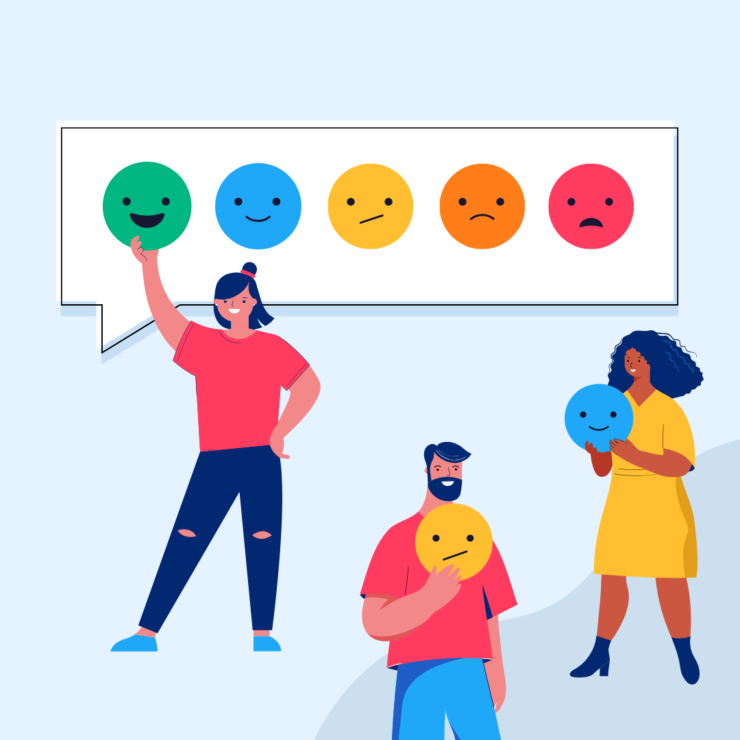In today’s market, consultative selling is a critical differentiation factor. The competition is intense, and buyers have endless options at their fingertips. Having a good product or service is no longer enough to stand out!
To stay relevant and ahead in the competition, sales representatives need not only the ability to make sales but also to position themselves as strategic consultants who can help solve the business problems of potential and existing customers.
Sales representatives should now focus on building long-term relationships beyond transactional sales and present themselves as reliable business consultants.
The consultative selling approach is the strategy and skill set that sales teams need to achieve this.
In this article, we will explore what consultative selling is, its advantages, how it differs from traditional sales methods, its methods, and the implementation steps.
Enjoy reading! 😊
What is Consultative Selling?

Consultative selling is a needs-based sales approach that focuses on building a relationship with a customer or potential customer, understanding their problems, and developing solutions through open-ended questions and active listening.
Consultative selling places the buyer’s needs above the needs of the sales representative. Sales representatives guide conversations rather than leading with a sales pitch. In these conversations, insights, advice, and guidance are provided that help the customer reach their goals in a helpful and non-manipulative manner.
What is the Difference Between Consultative and Traditional Sales?
For example, when you have an appointment with your doctor, 95% of the appointment is spent diagnosing issues, and only 5% of the time is dedicated to finding solutions. Consultative selling is essentially the same. In a sales meeting, 95% of the time is spent using questioning and critical thinking to accurately diagnose potential business issues. This is the opposite of traditional sales techniques where sales representatives spend 95% of their time discussing their products and services during sales attempts.
In our time, modern buyers are smarter and more aware than ever. The traditional sales approach of presenting the features and benefits of your product not only becomes outdated but also tends to disturb the buyer.
In modern sales, the more you try to sell something to someone, the more unsuccessful you will be. The key to sales success is not in making the sale but simply going out and having the right type of conversations with the right people, in a structured and repeatable manner.
The Advantages of Implementing the Consultative Selling Approach

Compared to the traditional sales system, which solely focuses on delivering the product to the customer, consultative selling offers significant advantages. These advantages can be discussed under the following general headings:
- Customer Satisfaction
Everyone approaching the company will feel listened to, making it much easier to turn them into regular customers.
- Customer loyalty
A good sales and post-sales experience ensures that customers want to come back.
- Enhancing Communication
Knowing the goals of a specific customer profile will enable the seller to establish higher-quality communication with the customer.
- Increased Motivation and Efficiency in Sales Teams
The seller’s efforts and dedication will be much more efficient with a higher success rate.
Consultative Selling Methods
Depending on the current goal of the sale, there are several ways to conduct consultative selling. The three most commonly used and effective methods are:
1- SPIN Sell
This technique relies on not interrupting the customer. Encourage a conversation where the customer speaks, requiring the guidance of the seller to solve the problem and gather all the necessary information.
2- Cross Sell
After completing a purchase, the seller can offer another product or service that complements the previous purchase. This can be done by addressing a new need concern with a simple solution at hand. Understanding what the customer wants and providing additional features that satisfy them is usually the best approach.
3- Upsell
When the customer decides to make a purchase, the seller can indicate that, for an additional fee, they can receive a significant upgrade from the product they are considering purchasing. It should be emphasized that the goal is not to show the previously offered option as inadequate but to enhance the shopping experience further.
How to Implement Consultative Selling?
1- Conduct Research
Before initiating communication with a potential customer, you’ll want to do some research. This is crucial because you need to start the conversation knowing why they want to talk to you.
In your research, you should identify the general goals and potential pain points your potential customer may encounter. Understanding their business thoroughly will make it easier to customize your conversation based on their needs.
2- Listen to Customers and Build Trust
Initiate the conversation by asking some questions. Some sample questions to start with include: What makes this call/meeting valuable for you?, How are you currently managing your processes?, What is going well in your current process?, What is not going right in your current process?, What are your goals?
Carefully listen to your customers, avoid interrupting them, and always take notes of what they share.
3- Ask More Questions
After building trust, you can ask more specific questions about the type of solution your potential customers need.
Some questions you can ask to better understand their business processes include: What are some specific things that hinder you from reaching your goals?, What worked best with your previous/current solutions?, How would changing this process make your job easier?, What are your concerns about making a change?
4- Provide Recommendations
At this point, you can introduce your product as a solution. Position your product based on the needs discussed during your conversation.
If your product isn’t suitable for them, suggest an alternative solution. And remember: If a deal doesn’t close immediately, it doesn’t mean you wasted your time. Throughout this process, you’ve built a good reputation, and there’s a high chance of being recommended to others who may need your product by your potential customer.
5- Close the Deal
Remember, the goal of consultative selling is to build a relationship. Closing is an additional advantage for this, and it provides an opportunity for you to establish trust between you and your potential customer.
6- Follow Up
Stay in touch with the customer at every step of the process. If they haven’t responded within a specific period, you can reach out to them via call or email to show that you’re still interested.
Until we meet in another article… 😊👋



